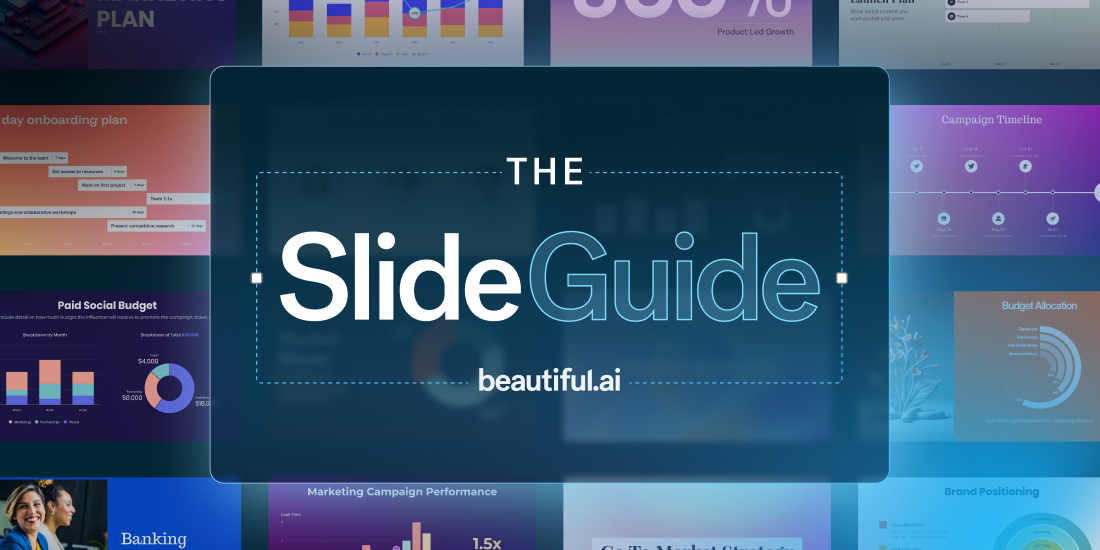
A tactic as old as time. Storytelling has been around for ages, passed down from generation to generation, to help people understand different things, events, and ideas. Research suggests that we’re hardwired to listen to stories, so it’s no wonder that it’s used in every culture. In fact, neuroscientist, Uri Hasson, conducted a fMRI study and concluded that storytelling causes the neurons of an audience to sync with the storyteller's brain. Crazy, right? This implies that their brain is experiencing the same emotions as the presenter in real-time. The power of storytelling skills is highly underrated.
Some of the benefits of storytelling include relatability, it’s attention grabbing, evokes emotion, can be more persuasive than the normal delivery of information, builds anticipation, and of course, it’s memorable. Regardless of your message or idea, storytelling techniques really help to drive your point home. If you’re thinking that the above sounds like a fool-proof strategy for presentations, you’re not wrong.
Businesses have started crafting stories around the message of their presentation to better engage their audience. It’s important to remember that when you’re presenting to a live audience, you’re selling your story not your product. As such, writing an effective story can make or break how your presentation is received. With a clear narrative structure, your audience will be more engaged, inspired, and more likely to remember what you’ve said to them after they’re gone.
We know you're all wondering how to be a better storyteller, so here are five storytelling techniques to keep in mind to help you write a more effective story for your next presentation.
#1. Craft the beginning
How you start your presentation matters as it sets the tone for the remainder of your story. This means it’s okay to ditch that long-winded introduction that puts your audience to sleep. Instead, it’s important to grab their attention from the get-go by explaining life as the audience knows it. Your message should be tailored to them. What do they already know about this topic, and do they care about it? How will it affect them? The beginning should be relatable, and go after their specific pain points that your product, service, or business will solve later in the presentation. You may also want to lead with one of your key points or takeaways— which you can elaborate on later— to hook them early on. However you decide to start your story just make sure it’s authentic, evokes emotion, and builds trust within the first 60 seconds.
#2. Create a clear narrative
When crafting your narrative it’s important to know your audience. What are their pain points, values, and opinions? If you know your audience you can tailor your narrative to resonate with them, so that they can feel like the hero (or heroine) of the story. Afterall, every story has its own hero, challenge, journey, and ending— so your presentation should, too. Your story should share the journey of your business, the dramatics of how it overcame obstacles, how it fills a gap in the industry, and why it’s the best option for your audience compared to competitors. Telling your story in chronological order with a clear beginning, middle, and end helps the audience to remember and retell the story more easily.
Regardless of your message, a clear narrative will 1) help you feel confident in where your presentation is headed, and 2) keep your audience more connected and engaged.
#3. Define the main point or key action you want to achieve
The middle of your presentation is the meat of your story. Everything you say should relate back to your main point or a key action you’re hoping to achieve. In your business presentation, your main point might be a problem that the audience has to overcome— the solution being your company. Your story is ultimately building up to your call-to-action at the end of the presentation. How is your narrative supporting that CTA that you’re hoping to achieve? Define these main points and key actions early on and craft your message around them.
#4. Engage the audience with dynamic animation
An important part of every story is the delivery. Your message may be air-tight, but if your delivery falls short it could jeopardize your entire presentation. Engage your audience and evoke emotion with dynamic animations that help bring your story to life. In Beautiful.ai we have a handful of presentation slide templates with customizable, dynamic animation options to help liven up your message. Using visual aids will help keep the audience more connected and encourage memory retention.
We know that one size doesn’t always fit all, so we give you the power to decide how your animations will build on each slide. You control the speed, the order, and whether they build automatically or advance with a click. Depending on your content, and talking points, you may select a slow, normal, or fast animation speed. For example, if you want to elaborate on each point before the next one appears, you might consider a slower build so that you have time to narrate as the slide progresses. Regardless of which animations you choose, they’re a fool-proof way to add some energy to your story.
#5. Close with a powerful ending
How you leave the audience is just as important (if not more) as how you greet them. Forget the traditional “thank yous” and leave them with something more memorable instead. Drop a shocking or bold statistic that will stay with your audience long after they’ve left the auditorium. And don’t be afraid to hit them with a plot-twist at the end of your story. The audience needs to feel inspired to take action before you leave them with your CTA. Make sure the audience knows how much better, or easier, their lives will be if they adopt your product or idea.







